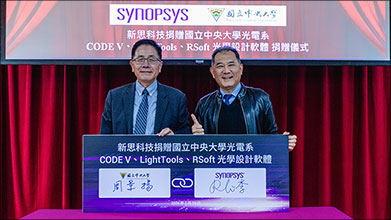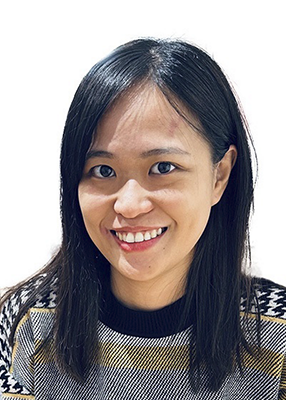Cloud native EDA tools & pre-optimized hardware platforms
Where can you find a gathering of people who share the same interests in optical design, want to further developments and research, and compete in solving challenging problems? We’re talking about the International Optical Design Conference (IODC), which was held in person this year in Quebec City, Quebec, Canada, on June 4-8.
Networking and IODC Significance
IODC, held every four years, is the “Olympic games of optical design,” according to Henning Rehn, one of the meeting chairs. IODC was co-located with the Optica Design and Fabrication Congress. To start off the week, a welcome breakfast on Monday provided a good time to network with colleagues in the industry.
“IODC is a special conference that brings together the optical community and provides a ‘snapshot in time’ of what has happened over the last four years,” said Dr. Bill Cassarly, one of the conference organizers.

Julius Muschaweck, Bill Cassarly, Henning Rehn, members of the Illumination Guild
(Not pictured: John Koshel, Lien Smeesters)
Design Challenges and Winners
This year, the illumination design problem required a solution to reattach the unicorn’s horn to save the Kingdom of Lambert. Designs needed to be modeled in single commercial software package and follow specified criteria. John Hygelund, a student from the University of Arizona, was the winner of this challenge.
The imaging design problem, also called the Shafer Cup Competition, challenged designers to model a maximum-etendue lens with diffraction-limited image quality over the field of view at 550 nm and yet have bad on-axis image quality at 540 nm when evaluated at the same image location. The coveted Shafer Cup was awarded to the entry with the highest merit function, which was submitted by Arnaud Davenel of Safran in France. The student winner for this year’s Shafer Cup lens design problem was Guillaume Allain from University of Laval.
“I want to recognize the tremendous effort of the winners who created some really complex systems,” said Henning, who was also a member of the Illumination Guild. The Illumination Guild creates the illumination design challenge for every IODC. We heard that Georg Nadorff from Garmin had great fun trying to come up with a solution using Chat GPT. The good news is that we still need the expertise of human optical designers to solve these optical design problems!

Arnaud Davenel’s winning design for the Lens Design Problem
Synopsys and Industry Presentations
IODC included many inspiring talks and great discussions. Following is a summary of presentations by Synopsys staff and selected industry colleagues.
- Recent Advances in Tolerancing Illumination Optics. By Dr. William Cassarly, Synopsys Scientist, Synopsys, Inc. Tolerancing is a critical step in creating successful commercial products. Bill explored recent advances in tolerancing illumination optics with particular emphasis on surface perturbations and extended sources.

- Validation of a Ray-Based Tool for Metalens Design and Analysis. By Dr. Yijun Ding, Senior Applications Engineer, Synopsys, Inc. A ray-based metalens design tool can bridge the gap between the metalens (macro-optics) and the optical property of the meta-atoms (micro-structures), hence reducing the complexity of the metalens design workflow. Joy presented validation results of a ray-based metalens design tool through the following design examples: (1) single metalens; (2) hybrid refractive lens and metalens; and (3) two metalenses.

- Characterizing Finely Structured Ghost Images Using Physical Optics Propagation Methods. By Dr. John Rogers, Synopsys Scientist; Mike Zollers, R&D Engineer; Eric Herman, R&D Engineer; Synopsys, Inc. It is difficult to calculate the peak irradiance of ghost images that have extremely fine features. Eric described a method for determining the peak irradiance of such ghosts using physical optics propagation methods.

- The Importance of Lens Mounting Details in Passive Athermalization: A Design Example. By Eric Schiesser, Senior R&D Engineer, Synopsys, Inc. Lens mounting details are important in passive athermalization. Eric presented a 10-element lens that is athermalized with one mounting structure (seats), and yet performs poorly over temperature if assembled using a different mounting structure (spacers).

- The Continued Importance of the Abbe Sine Condition. By Nick Takaki, Senior R&D Engineer, Synopsys, Inc. Optical design veterans are familiar with the Abbe Sine Condition, but many newer designers are less aware of how fundamental and powerful it is. Nick described the Abbe Sine Condition, its history, and continued application to modern systems with emerging technologies (e.g. flat optics, metalenses, etc.).
- Leveraging Confocality and Cartesian Reflectors in Freeform Optical Designs. By Nick Takaki, Senior R&D Engineer, Synopsys, Inc (Joint talk with Jonathan Papa, NASA Goddard Space Flight Center). Freeform systems often benefit from staying close to conic base surfaces. However, sometimes the drive to obtain better performance leads to increased departures and therefore diminished benefits of conic surfaces. Nick discussed how carefully controlling departures from conics can allow a designer to achieve the enhanced optical performance of freeform designs and still retain the null test advantages of conics.

- Metasurfaces for Lens Designers. By Simon Thibault, Université Laval, Canada. Simon’s presentation provided a thorough introduction to metasurfaces with a focus on how to apply metasurfaces in optical engineering. As long as they are made on flat substrates, coma will affect imaging performance and metalenses will serve mainly the low etendue realm. On the other hand, metalenses may do a great job when combined with “ordinary” optics. Simon also discussed specific ghost effects of metalenses.
- Alignment Verification of the Roman Space Telescope using Machine Learning. By Joseph Howard, NASA Goddard. Joseph demonstrated how machine learning algorithms are used to analyze shadows of system obstructions to verify the pupil alignment between telescope and instrument.
- Freeform Manufacturing Process Optimized by Automatically Generating a CAD Model. By Yiwen Fan, University of Rochester. Yiwan presented a tool that interacts with CODE V to automatically generate high-accuracy CAD models of freeform elements with datums and fiducials, facilitating fabrication and measurement. They can also generate technical drawings automatically based on the CODE V plot.

- Hybrid Fresnel-Diffractive Lens Design for Virtual Reality. By Yang Zhao, Meta Platform, Reality Labs Research. Yang designed and prototyped a hybrid lens with a high-index Fresnel lenses made of ZnS and a diffractive lens made of liquid crystal polymer for virtual reality displays.
- Improving Weight and Imaging Performance of a Very Fast f/0.75 Lens Using Optical Co-Design. By Marie-Anne Burcklen, Angenieux and Thales. Marie-Anne described how using a surrogate merit function that combines the classical merit function with weighted constraints that enforces MTF and PSF invariance is fast to optimize and provides a good solution when deconvolution is used in post processing.
Community and Partnerships
Synopsys and other companies exhibited at the conference. Synopsys staff passed out IODC 2023 commemorative t-shirts, a tradition for Optical Solutions to give out at every IODC. This year’s shirt featured the skyline of Quebec City and highlighted that we are celebrating 60 years in optics!
Nick Takaki, a past Kidger Scholarship winner and R&D engineer at Synopsys, sums up the entire experience:
“IODC is a vibrant gathering of global authorities in optical design, exemplifying the passion, camaraderie, and expertise of this community. Attending, presiding, and engaging in after-hours discussions were thrilling experiences that leave me excited to be a part of the future of optical design.”
Thanks to Henning Rehn, Bill Cassarly, Joy Ding, and Nick Takaki for contributing to this article.

Synopsys booth at IODC

Tina Kidger with several current and past Michael Kidger Scholarship winners at IODC.
Ankur Desai is pictured on the far left.

Eduardo Gonzalez from Edmund Optics receives a t-shirt from Carl Klinges, Sales Manager, at the Synopsys booth

François Riguet from Safran REOSC wearing the Synopsys t-shirt










